New kit set for launch at November’s Sima show in Paris
 © Olimac Dragotec
© Olimac Dragotec The Sima show returns to Paris in November to mark its 100th anniversary.
Here, we round up some of the new farm machinery to look out for, with much of it featuring smart technology.
See also: Ultimate guide to buying a combine 2023
Vaderstad
Proceed drill
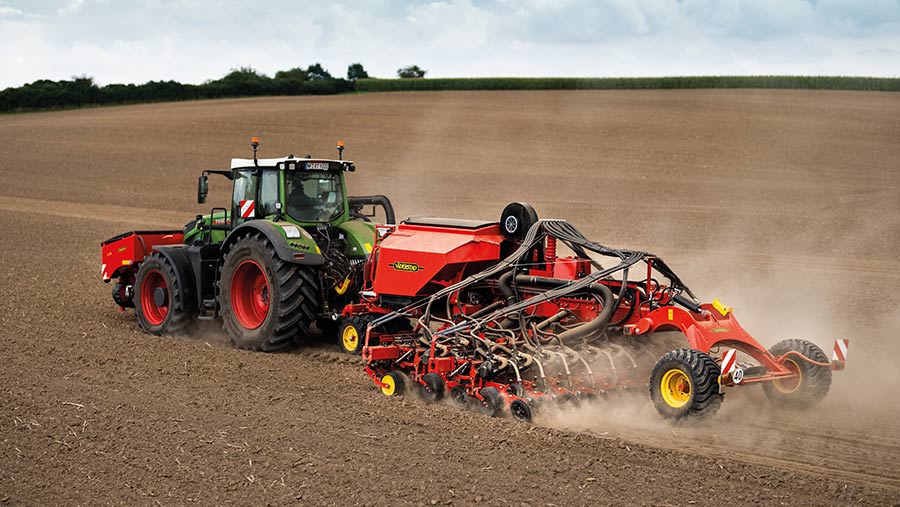
© Vaderstad
Vaderstad will be showing its new Proceed precision drill, which can be adapted for sowing cereal crops, maize, oilseed rape and sunflowers, to name but a few.
The new machine has customisable row spacings depending on crop type, starting at 225mm or 250mm for cereals.
This, along with changing the seed disc, can be altered to 450mm or 500mm for sugar beet and oilseed rape, or 750mm for crops such as maize and sunflowers.
Each row unit can be controlled from the iPad-based E-Control system in the cab, with functions such as row-by-row shut-off, individual calibration, and precision monitoring.
This, the makers say, allows for seed placement with millimetre precision.
Trials carried out by the manufacturer showed that in a field of winter wheat that was drilled at a rate of 150 seeds/sq m, there was a marked increase of 102% in plant biomass, 72% more root biomass, and shots per plant also increased by 62% when compared to other conventional drills.
Vaderstad also claims that further field trials showed that the Proceed can cut winter wheat seed rates by half, while baring no impact on yield levels.
Krone and Lemken
Combined Powers
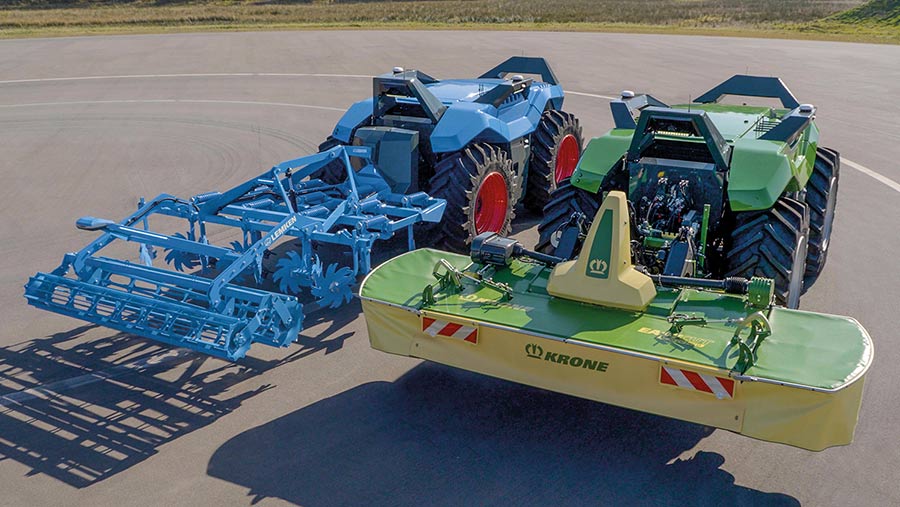
© Combined Powers
Krone and Lemken have partnered up for the Combined Powers project – a joint venture that has produced an autonomous tractor-like “process unit”.
The machines, which are powered by a diesel electric engine, have no gearbox, and are capable of producing up to 170kW and 230hp, with electric motors to power the wheels and pto shaft.
They have so far passed trials in cultivating, ploughing, sowing, mowing, tedding and raking, using both Lemken and Krone implements, which are attached via the three-point linkage.
The units do not have a cab, and operate on an entirely driverless basis.
Instead, the operation is supported by a series of sensors that can detect objects and obstacles, while also monitoring the attached implement.
This is overseen by an operator, who can control and receive job reports from the machine via a mobile device.
Olimac
Drago Gold sunflower harvester

© Olimac Dragotec
Manufactured by Piedmont-based Italian firm Olimac, the Drago Gold is a sunflower harvester capable of tackling stems up to 1.5m in height.
It works by combining both ground-level chopping and sunflower harvesting, removing only the head of the flower without processing the stem, which avoids overloading the thresher.
Unlike traditional headers, it does not have reels or cutter bars, but rather a series of gathering chains with polymer teeth that gently guide the stems towards the 500mm cross-auger – which the makers claim is the largest in the industry.
This process is designed to reduce vibrations on the plant, thus preventing seed losses.
Along with sunflower harvesting, the makers say that the Drago Gold can also be used on crops such as hemp, sorghum, and castor, and is available with rows ranging from six to 24.
It is also compatible with all brands of harvesters.
Emily
Autonomous turbine straw blower
French manufacturer of agricultural and construction equipment Emily will be showcasing its new Vortex straw spreader at Sima.
The machine features autonomous management of the shredder and belt operation, with a patented system that continually collects data to control the speed of the belt, along with the clutch and shredder disengagement.
This system reacts at more than 200 times the speed of a human, controlling and adjusting the operation in just 0.005sec.
The makers say that the automated control function reduces the risks of blockages and mechanical breaks.
It also cuts stress when spreading dense or difficult forage – of which it can handle all main types, including hay, silage, maize and grass, in both rectangle and round bale formats.
Claas
Variant 500 baler
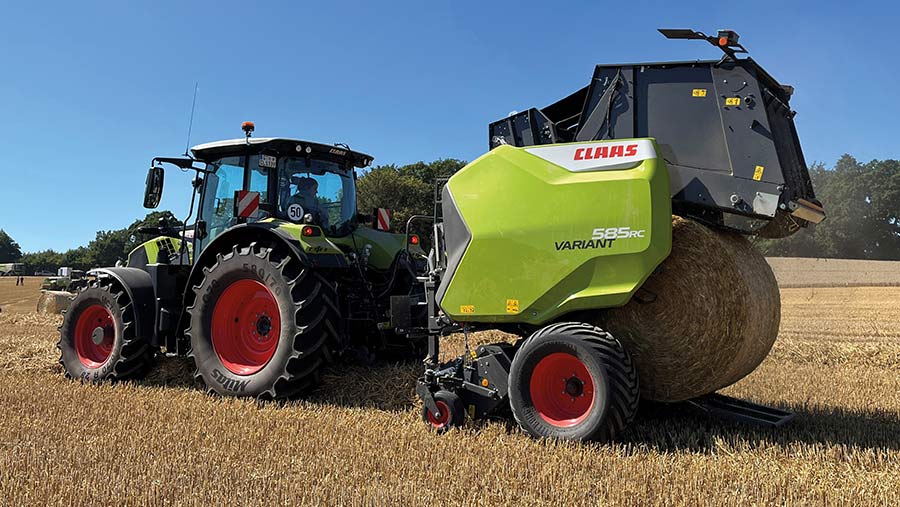
© MAG/Matilda Bovingdon
Claas’s next generation of Variant balers includes four new models, which will be available from 2023.
The machines are categorised by either an RC or RF name designation, denoting it as either a Roto Cut machine, with a cutting rotor and reinforced drive components, or a rotor feed baler.
At the smaller end of the range, the 560 RC and 565 RF can create bales in sizes ranging from 0.9m to 1.6m in diameter, while the larger 580 RC and 585 RF models will produce round bales up to 1.8m in size.
The new Smart Density function allows for baling density to be adapted to individual forage types.
The concept requires the operator to manually input their density requirements and baling conditions using the Cemis 700 terminal.
This automatically adjusts the press and the two belt-tensioning arms, which work independently.
Other updates to the new range include a repositioning of the net roll, which now sits about 25cm lower, and an improved brake-and-knife release system in the binding area.
Ecorobotix
ARA plant-by-plant sprayer
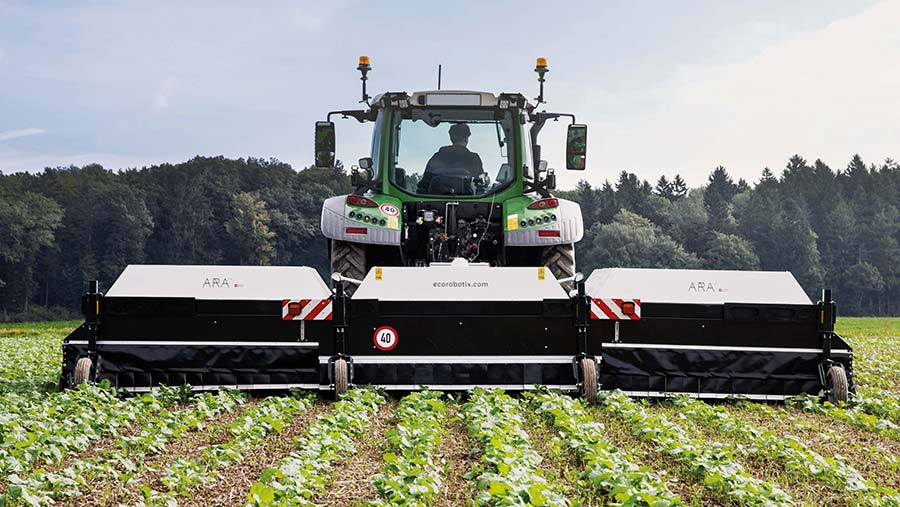
© Ecorobotix
Swiss company Ecorobotix has manufactured an ultra-precise smart sprayer for applying herbicides, insecticides and fungicides to treat individual plants, rather than blanket treating the entire field.
The ARA sprayer technology is based on artificial intelligence, and uses a series of cameras across the 6.6m working width.
These collect images to identify and differentiate between crops and weeds.
It works by utilising 156 spray nozzles at 4cm intervals, and can be operated at speeds of up to 7.2km/h – this equates to an output of 4ha/hour.
The makers say that this plant-by-plant approach can reduce chemical use by a whopping 95%, and can also improve crop yields by up to 5%.
Unlike traditional sprayers, the machine can also be used in windy conditions, making it less vulnerable to unfavourable weather changes.
There are currently 13 types of herbicide, insecticide and fungicide treatment available, which can be used on row crops such as maize, oilseed rape, onion, beet, and spinach.
Copeeks
Peek’ture pasture monitoring system
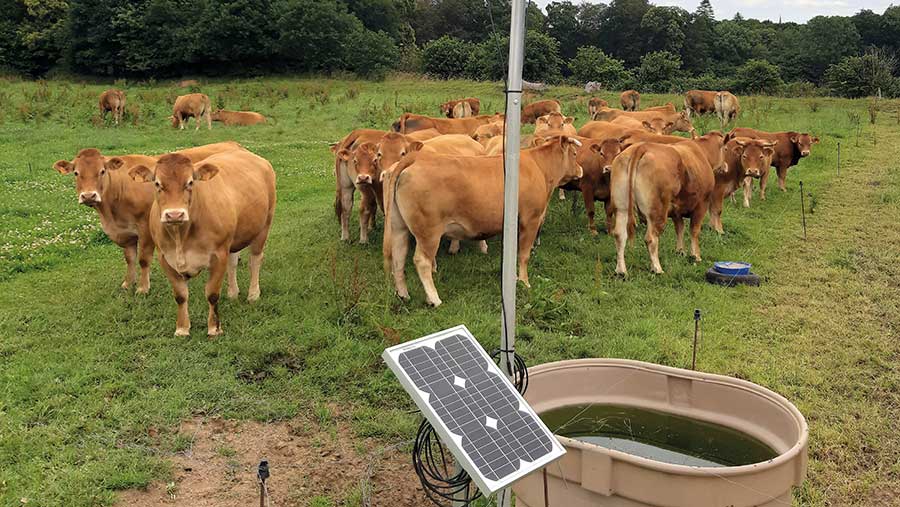
© Copeeks
One for the livestock farmers, French agritech company Copeeks specialises in the monitoring and collecting of farm data.
The Peek’ture is an intelligent system that allows farmers to monitor the pastures and grazing that is available to livestock by providing a wide-angle view of the living space – even from land several miles away.
The monitoring service works in real-time and uses a series of sensors placed in the environment, including in the soil, air, and in water sources.
It collects data on animal behaviour and their habitat, including temperatures, water levels, and water consumption.
While assessing these factors, operators can also set alerts for when certain thresholds are breached, such as depleting water sources or temperature anomalies.
Krone
Additive incorporation system for silage equipment

© Krone
After reporting demand from contractors in Australia and the US, German manufacturer Krone has developed an additive incorporation system for its fifth generation BiG Pack balers, with the option to fit the mechanism on to other silage harvesting equipment.
The additives are dispensed from a 400-litre tank according to the baler’s throughput rate, travelling through two lines and distribution nozzles.
Within the tank, a filling level sensor alerts the operator when the reading reaches a pre-set threshold.
Distribution of the additives is controlled by using either the weighing information from the chute or by manually inputting the bale weight.
The flow rate can also be adjusted manually or automatically controlled based on the moisture levels.
BeeGuard
Beelive bee counter
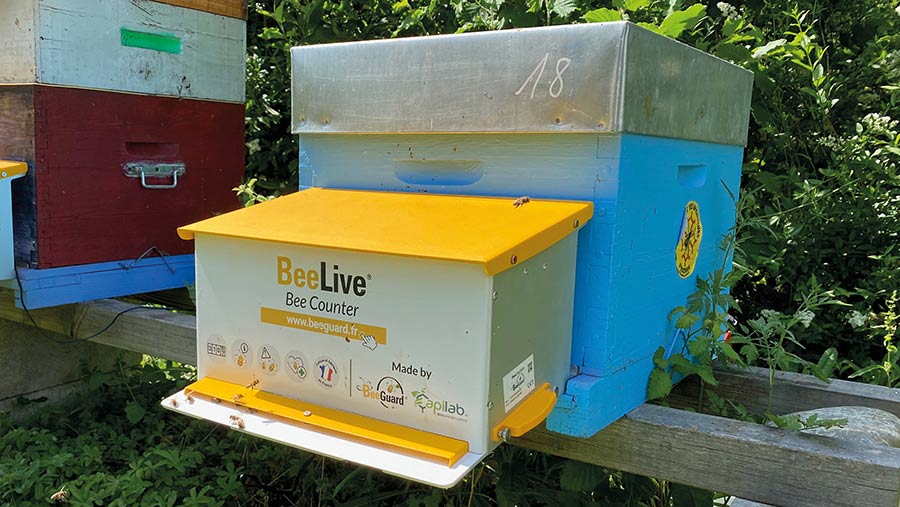
© BeeGuard
French agtech start-up BeeGuard has unveiled its next generation of environmental sensors for monitoring bee populations and environments.
Aimed at farmers embracing pollinator-friendly practices, the sensor uses video analysis and artificial intelligence to count bee numbers, studying their behaviours throughout the day.
It gives insights into hive flow, mortality rates, and foraging practices.
The biomonitoring system also gives an indication of food availability to the bees.
This can be used by farmers to measure the impact and success of various pollinator-promoting practices, which can indicate the health of the overall bee population.
Amazone
UX Smart Sprayer
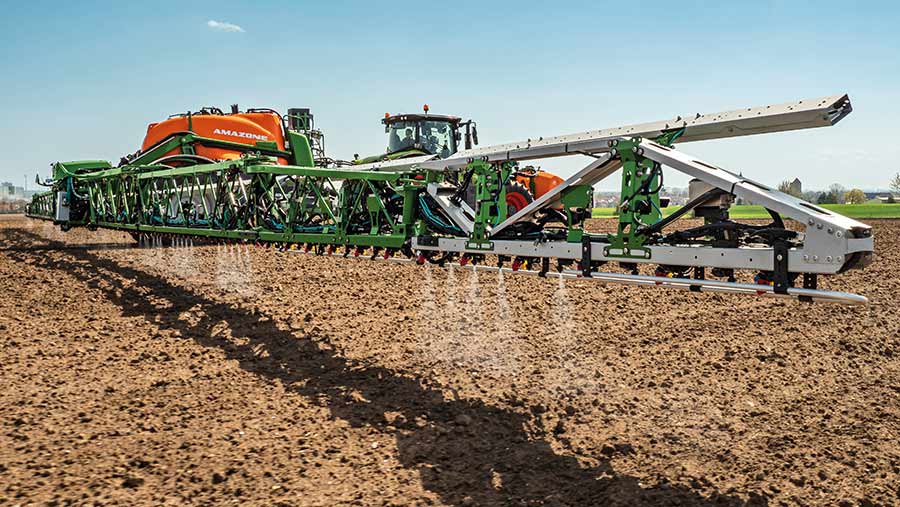
© Amazone
Amazone’s UX Smart Sprayer has been designed with two tech companies to offer its green-on-green spot application system.
The camera technology comes from Bosch, and is able to detect weeds in row crops by using an image recognition system.
This, the makers say, can detect undesirable growth even in its earliest stages, allowing for more precise herbicide applications.
Meanwhile, BASF Digital Farming is responsible for the Xarvio Agronommic Decision-making Engine (ADE).
This takes data from the Field Manager software, such as parameters for cropping, spectrum of weed types, and weather conditions, and transfers this information to the SmartSpraying system, managing the timing, precision, and intensity of the product application.
Distribution is managed by a combination of pulse width frequency modulation valves that are individually switched, and Agrotop Spot Fan nozzles spaced at 25cm intervals.
This allows operators to work at speeds of up to 12 km/h.
The manufacturer has been trialling the intelligent sprayer in Germany for the past three years, with results showing a marked reduction in crop protection products, saving up to 70%.
So far, it has been used in maize, sugar beet, and soya beans, but will soon be trialled in crops of oilseed rape and sunflowers.
Essential information
- Where: Parc des expositions Paris Nord Villepinte, ZAC Paris Nord 2, 93420 Villepinte
- When: 6-10 November 2022
- Opening times: 8:30am -6:00pm
- Tickets: €38 when booked in advance from Sima’s website, €48 on the door
How to get there
For those planning to brave the Parisian traffic, parking is available via two apps – Onepark, which allows you to reserve a space in advance, and Parclick, which displays nearby parking availability around the exhibition park.
From Paris’ Charles de Gaulle airport, it’s a 10min taxi or Uber ride, or, alternatively, you can jump on the RER metro on line B, from which the exhibition centre is the first stop.

